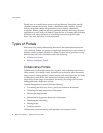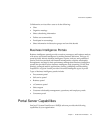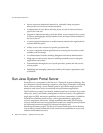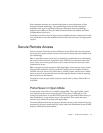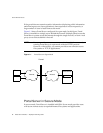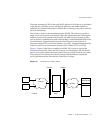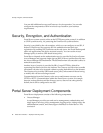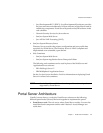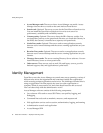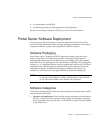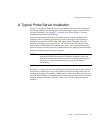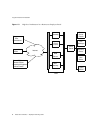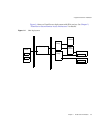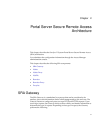Identity Management
30 Portal Server 6 2005Q1 • Deployment Planning Guide
• Access Manager node.The server where Access Manager can reside. Access
Manager does not have to reside on the same node as Portal Server.
• Search node. Optional. The server you use for the Portal Server Search service.
You can install the Portal Server Search service on its own server for
performance, scalability and availability reasons.
• Gateway nodes. Optional. The server where the SRA Gateway resides. You
can install the Gateway on the portal node. Because you locate the Gateway in
the DMZ, the Gateway is installed on a separate, non-portal node.
• Netlet Proxy node. Optional. The server used to run applications securely
between users’ remote desktops and the servers running applications on your
intranet.
• Rewriter Proxy node. Optional. The server used to run applications securely
between users’ remote desktops and the servers running applications on your
intranet.
• Directory Server node. The server running Directory Server software. You can
install Directory Server on a non-portal node.
• Other servers. These servers, such as mail, file, and legacy servers, provide
backend support, data, and applications to portal users.
Identity Management
Portal Server uses the Access Manager to control many users spanning a variety of
different roles across the organization and sometimes outside the organization
while accessing content, applications and services. The challenges include: Who is
using an application? In what capacity do users serve the organization or
company? What do users need to do, and what should users be able to access?
How can others help with the administrative work?
Access Manager software consists of the following components:
• Java software APIs used to access SSO Token, user profiles, logging, and
debugging
• Command line tools such as amadmin, amserver, and ampassword
• Web application services such as session, authentication, logging, and naming
• Administration console web application
• Access Manager SDK



